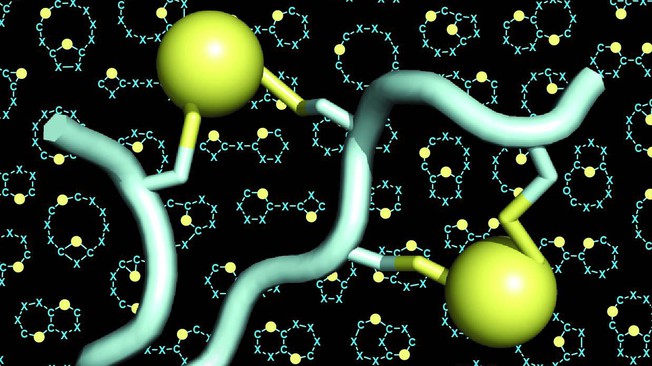Mutant C1 Inhibitor Traps Healthy C1 Inhibitor in Cells of HAE Patients, Study Shows

Some mutations in the SERPING1 gene that cause hereditary angioedema (HAE) result in an abnormal form of the C1 inhibitor (C1-INH) that binds to and traps healthy C1-INH in cells, severely reducing the amount of protein available to prevent HAE attacks, a study shows.
The study, “Dominant negative SERPING1 variants cause intracellular retention of C1-inhibitor in hereditary angioedema,” was published in The Journal of Clinical Investigation.
HAE is usually caused by mutations in the SERPING1 gene, which provides the instructions for making the C1-INH protein. These mutations reduce the amount of functional C1-INH that’s made by the gene, either because less C1-INH is produced (type I HAE) or because the C1-INH that is made doesn’t work (type II HAE).
Most HAE patients are heterozygotes, meaning they have one normal SERPING1 gene and one mutated gene. Yet many of these patients have plasma C1-INH levels that are five times lower than normal, not the reduction by half that might be expected, given that they have half as many genes that encode for a functioning protein.
“One of the mysteries about this disease has been the question of why the patients produce so little of the protein,” Didde Haslund, a PhD student at Aarhus University in Denmark and the study’s first author, said in a press release. “Because with two hereditary genes — a defect from one of the parents and a normal one from the other — you would think that the production might be around half the normal amount. Yet these patients produce only 10 to 20 percent of the normal level.”
Based on this discrepancy, the investigators predicted that the malfunctioning C1-INH produced by some SERPING1 mutations might inhibit the production of normal C1-INH.
They focused on six HAE-causing SERPING1 mutations that produce a nearly complete mutant C1-INH, reasoning that these mutations would be the most likely to have these effects. They confirmed that plasma C1-INH levels were lower than normal in HAE patients with these mutations. They then expressed these mutant genes in cells in a dish.
The researchers found that, even though all the cells made C1-INH, the protein was only secreted from cells producing the normal protein. That is, mutant C1-INH could be made, just not shipped out of the cells.
Interestingly, when HAE-causing and normal SERPING1 genes were co-expressed in these cells, the secretion of C1-INH decreased, meaning that the presence of the mutant protein impairs the secretion of the healthy protein. Upon closer investigation, the team found that C1-INH aggregates were forming in these cells.
These aggregates contained both normal and mutant C1-INH, and they tended to get stuck in the endoplasmic reticulum (ER) — a continuous network of flattened sacs where proteins mature.
The team deduced that the mutant and normal C1-INH proteins were binding to each other in these aggregates, and when they examined cells from a patient with one of the HAE-causing SERPING1 mutations they had investigated, they found similar aggregates. This suggested that their results with cells in a dish are reflective of the actual molecular mechanisms that drive disease in patients.
Since more than 450 SERPING1 mutations have been reported, the researchers then wondered whether other, similar mutations might have the same effects as the ones they had studied. They chose 10 additional SERPING1 mutations that affected the C1-INH protein in a similar manner and found that, indeed, many of them reduced or even fully inhibited the secretion of healthy C1-INH in their cellular model.
They then considered how this new mechanism might be exploited to provide therapeutic benefits for patients with HAE. They tested whether inducing C1-INH production using a lentivirus — a common gene therapy technique — might produce enough normal C1-INH to overcome the secretion inhibition.
The approach did increase the amount of C1-INH that cells from HAE patients were able to secrete, suggesting that this could be a strategy for HAE treatment.
“Our studies in patient cells suggest that the … effects of the disease allele can be overcome by viral vector-based gene delivery facilitating solid C1-INH expression after gene delivery,” the investigators wrote.
However, further studies will be needed to determine whether all of this additional secreted C1-INH is functional or is affected by ER dysregulation in these cells, and the potential arrival of a gene therapy of this type in clinics is still a long way off.







